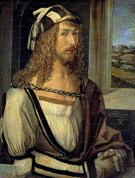Art, Art History and Design, School of
Date of this Version
2019
Citation
From: Crossroads: Frankfurt am Main as Market for Northern Art 1500–1800, ed. Miriam Hall Kirch, Birgit Ulrike Münch, & Alison G. Stewart (Petersburg: Michael Imhof Verlag, 2019). ISBN 978-3-7319-0396-3
Abstract
Five hundred years ago, Sebald Beham had reasons enough to leave Nuremberg and more than enough reasons to move to Frankfurt. That town's attraction as a printing center became one of the factors that resulted in Beham's settling permanently in the city on the Main in 1531, leaving behind his home town of Nuremberg, best known as the artistic center of the Renaissance master Albrecht Durer. Despite the high regard the Franconian town and Durer received, the authorities there did not treat other painters in Durer's circle particularlywell. The dubbing of Beham as 'godless painter' in 1525 constituted one of several encounters with the Nuremberg town council that resulted in his expulsion and later exile, after which he sought a new home. Beham's early life in Nuremberg and the reasons he may have had for moving away, including his encounters with Nuremberg's council, form the first part of this essay. I will then address what drew Beham to Frankfurt in 1531, including new opportunities in painting and book publishing and the production of prints. Using Beham's move to Frankfurt as a case study, this paper claims a greater importance for Frankfurt and its fair for both the history of printing and art history during the first half of the sixteenth century before Frankfurt rose to what Hans-Jorg Kunast has called its "prominence as a centre of printing during the second half of the sixteenth century, when important publishers such as Sigmund Feyerabend established theirworkshop[s] in the city". I argue that what drew Beham to Frankfurt was the town's relative lack of importance for printing, in particular its absence of book publishing and resulting openness to it, and its important fair. My work supports the speculation of Peter Parshall and David Landau on the importance of what they call "the great trade fairs" for the exchange of prints by those engaged in dealing and publishing prints and of book publishers for distributing prints before the middle of the sixteenth century. It is just this link between book publishing and prints that must have clinched Beham's decision to move to Frankfurt and not somewhere else.
Included in
Book and Paper Commons, Cultural History Commons, European History Commons, Graphic Design Commons, History of Art, Architecture, and Archaeology Commons, Illustration Commons, Intellectual History Commons, Printmaking Commons


Comments
Copyright ©2019 Michael Imhof Verlag GmbH & Co. KG